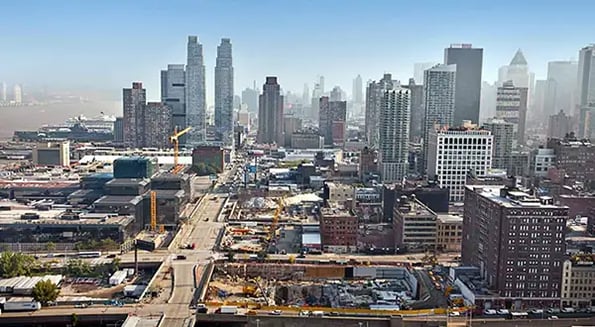Hudson Yards, the largest mixed-use private real estate project in American history, opens today on Manhattan’s Far West Side.

The $25B, 28-acre project is 12 years in the making and will feature 18m square feet of residential, corporate, and retail real estate.
The project’s size is raising eyebrows, but so should its business model. Hidden under a mixed-use, taxpayer-funded exterior, the development is actually a luxury, e-commerce-optimized mall.
Meet the Taj Mahal of malls
Described as a “neighborhood” by tour guides, Hudson Yards features a $200m walkable sculpture, a tower taller than the Empire State Building, a performing arts center, an air-conditioned garden, and businesses.
Corporate giant BlackRock, which manages $5.98T, is saving millions on taxes by relocating to HY. Retailers are lining up: 90% of retail space has been leased (by brands like Lululemon and Rolex).
It gets crazier: The ultra-luxe mega-mall is funded by city taxpayers. NYC gave the project $5.7B in tax breaks (much more than the $3B it offered Amazon before local opposition killed the deal). The city even extended a subway line for its development (a once-in-25-years event).
But the question is: Will it work?
Isn’t retail supposed to be dead?
“Normal” retail may be dead. But Hudson Yards isn’t retail… it’s e-commerce in physical form.
Hudson Yards has a “floor of discovery” that’s ripped straight from Instagram to showcase online brands, and best of all, this dystopian commercial gauntlet is just an elevator ride away from Hudson Yards’ 4k+ apartments, which sell for up to $32m.

